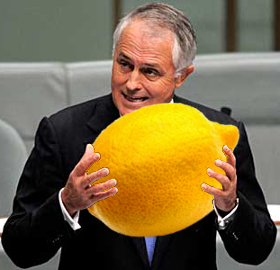Confused figures widen concern over NBN
 The Communications Minister has been caught contradicting his own department’s figures in his attempt to spruik the Coalition’s NBN model.
The Communications Minister has been caught contradicting his own department’s figures in his attempt to spruik the Coalition’s NBN model.
Malcolm Turnbull has used the Federal Budget announcements to claim the latest version of the National Broadband Network project will come in $32 billion cheaper, but a number of documents show this will not be the case.
Mr Turnbull is trying to extol the benefits of the new “multi-technology mix” for the NBN, which consists of a patchwork of existing and upgraded infrastructure with nominal new fibre-optics in small areas and satellite coverage in places where physical connections would cost too much.
“This will match the right technology to the right location and make use of existing networks where possible to deliver very fast broadband,” he said in a media release about the latest budget allocations for NBN Co.
But there are several claims in the release that reporters at key Australian technology news outlet Delimiter have disproved.
“This new approach to NBN implementation will save $31.6 billion in funding costs, get the NBN finished four years sooner and enable nine out of ten Australians in the fixed-line footprint to get access to download speeds of 50 megabits per second or more by 2019,” Mr Turnbull said.
But the NBN Co Strategic Review shows that it is not so much of a ‘saving’, as the Coalition’s approach will simply bring in a higher return on investment than the original full fibre-to-the-premises NBN approach. Given that either model will be reimbursed by subscription fees, it is arguable whether it can be considered a ‘saving’.
The Strategic Review papers also show that if one of several other models were used for the rollout, total capital investment requirement for the previous Labor government’s model would be $54 billion, just $15 billion more than for the Coalition’s plan.
Reporters have put together a considerable list of Mr Turnbull’s lapses in factual accuracy when selling the idea of the re-formed NBN scheme.







 Print
Print